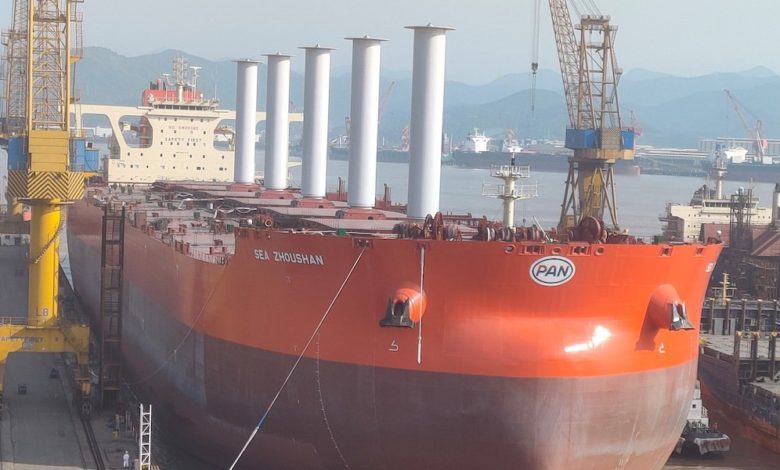Wind-powered cargo capacity breaks through 1m dwt mark

Wind propulsion has progressed from a perceived blue sky technology in the previous decade to gaining industry interest in recent years. The conversion of that interest into investment is now happening at a rapid pace, with large commercial vessels featuring wind-assisted propulsion passing the 1m dwt cargo carrying capacity mark.
There are currently 21 large vessels with wind propulsion systems installed onboard and that number will likely grow to 25 (1.2m dwt) by the end of this year, according to the International Windship Association (IWSA).
The passage of wind-powered ship propulsion through this key milestone coincides with the industry’s celebration of World Maritime Day, with the theme “New Technologies for Greener Shipping.”
When used as wind-assist on motor vessel profiles, wind propulsion technologies are estimated to save 5% to 20% in fuel use and associated emissions, with savings potential even higher for vessels that use primary wind technologies to achieve much higher levels of propulsive energy sourced from wind.
Based on recent public announcements and shipyard orders, IWSA estimated that by the end of 2023, up to fifty large ships will be making use of wind as a renewable energy source, with a combined tonnage of over 3m dwt.
“With fifty wind propulsion system rigs installed to-date on those 21 ships, and an anticipated 100 rigs installed milestone to be passed by the end of 2023, the price of propulsion technology is coming down. Reaching the one-hundred rigs installed milestone will represent an important market marker for wind propulsion technology in particular,” said Gavin Allwright, IWSA secretary general.
Allwright said that at this point, a sustained reduction in return-on-investment timeframes can be expected, especially if fuel prices remain high. “It’s easy to see why wind is becoming an increasingly attractive option for shipowners given its positive financial and decarbonisation potential and the fact that this technology basket delivers on compliance issues,” he added.
In addition to the fleet of large commercial ships sailing with wind propulsion technology installed, ten small cruise ships currently use traditional soft sail technology, representing a further 50,000 gross register tonnage (GRT). There are also a growing number of smaller vessels (under 400 GRT) using wind propulsion technology. The number of smaller vessels will also likely grow in the next year as more vessels are converted to sail cargo, retrofits on small fishing vessels are undertaken, and a demonstrator vessel is launched in the South Pacific.
